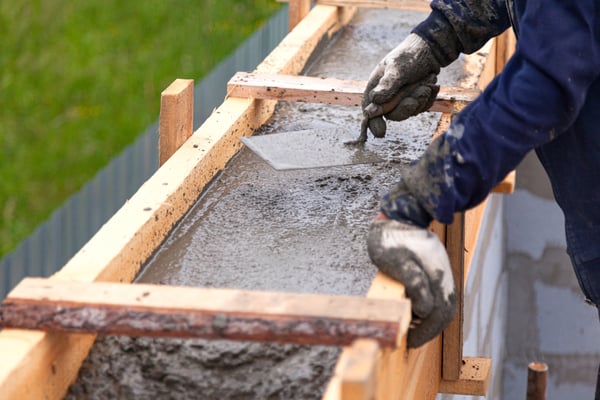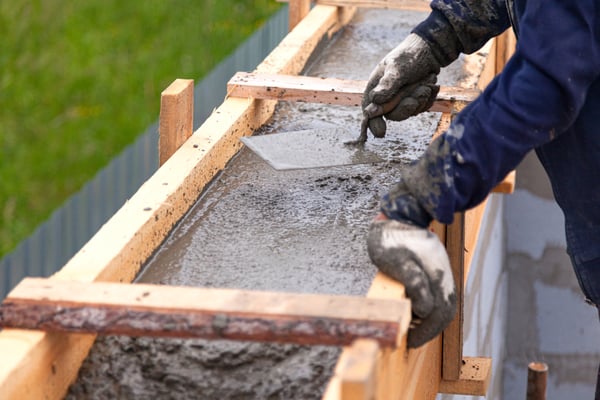Self-compacting concrete, also known as self-compacting concrete, is characterized by its high fluidity. Thanks to this property, it spreads in concrete forms without the need for vibrating equipment. This non-segregating concrete is distributed by its own weight, maintaining the properties of normal concrete, such as durability and resistance.
Some self-compacting concrete mixes include additives such as superplasticizer and viscosity modifiers to reduce bleeding and segregation. When concrete segregates, it loses strength and results in honeycombed areas across the surface. However, a well-designed self-compacting concrete will not segregate thanks to its plasticity and stability.
Get professional construction management services for your next project.
Self-compacting concrete materials
The materials used to create the self-compacting concrete mix are as follows:
Portland Cement : Ordinary Portland cement grade 43 or 53 is commonly used.
Aggregates : The size of coarse aggregate is limited to 20 mm, but in the case of having a structure with congested reinforcement, the size of the aggregate can vary between 10 to 12 mm. Well-graded round or cubic aggregates are recommended for best performance. Fine aggregates can be natural or manufactured with a uniform grade, generally smaller than 0.125 mm in size.
Water : Water is treated in the same way as regular concrete.
Mineral Additives : This may vary depending on the mix design and required properties. Below is a list of the different mineral additives used and the properties they impart to the concrete mix:
- Fly ash: Used to improve the filling of the internal concrete matrix, resulting in fewer pores. This reduces permeability and improves the quality of structures.
- Ground Granulated Blast Furnace Slag (GGBS): GGBS helps improve the rheological properties of concrete.
- Stone Dust: Incorporated to improve the dust content of the mixture.
- Silica Fumes: Used to improve the mechanical properties of the structure.
Chemical Additives : As mentioned earlier, superplasticizers are commonly used in self-compacting concrete. Air-entraining agents are used to improve the freeze-thaw resistance of the structure. Retarders are used to control the concrete setting time.
Properties of self-compacting concrete
Self-compacting concrete is resistant to segregation, thanks to the presence of mineral fillers and special additives. As mentioned previously, this type of concrete must have high fluidity and be able to fill special shapes with its own weight, without mechanical vibrations. It must also be fluid enough to pass around congested reinforced areas within structures and, most importantly, avoid any segregation (honeycombing). There are cases in which self-compacting concrete was placed at heights greater than 5 meters, without showing segregation of aggregates.
Self-compacting concrete with a water-cement ratio similar to traditional vibrated concrete will have a slightly higher strength due to the lack of vibration. This improves the interface between the aggregate and the hardened paste. It is important to note that self-compacting concrete must be placed more quickly than regular concrete.

Applications of Self-Compacting Concrete
The main applications of this type of concrete are as follows:
- Construction of raft and pile foundations
- Retrofit and repair of buildings
- Structures with complex reinforcement distributions
- Construction of earth containment systems
- Drilled shafts
- Columns
Advantages of self-compacting concrete
Self-compacting concrete has several advantages compared to normal concrete. Some of these benefits include:
- Quick placement without mechanical consolidation.
- Better constructability.
- Reduces permeability in concrete structures.
- Minimizes voids in highly reinforced areas.
- Eliminates problems associated with concrete vibration.
- Creates high-quality structures with improved structural integrity.
- High durability, resistance and reliability.
- Reduces labor costs.
- It allows for innovative architectural features, as it can be used in complex shapes.
- Creates smoother and more aesthetic surface finishes.
- It allows for easier pumping and there are many placement techniques available.
Disadvantages of self-compacting concrete:
As with any construction material, self-compacting concrete faces the following limitations:
- The selection of materials is more rigorous.
- Construction costs increase, compared to normal concrete.
- Many trial batches and laboratory tests are required to use an engineered mix.
- Greater precision is required when measuring and monitoring.
- There is no internationally accepted testing standard for self-compacting concrete mixes.
Special considerations when using self-compacting concrete
When using this type of concrete, there are several special considerations to obtain the best results. Firstly, the production of self-compacting concrete requires more experience and care than normal vibrated concrete. Furthermore, the formwork used must be designed to withstand higher pressure than normal concrete. Finally, it is not recommended to use concrete mixers at full capacity due to the high fluidity of self-compacting concrete – it can spill onto the road, causing contamination.

